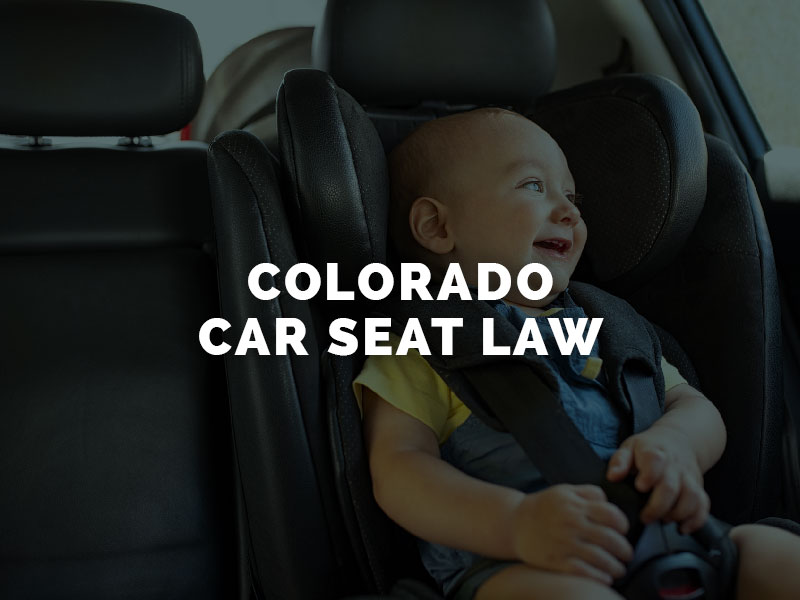Proper child restraint in motor vehicles should be a top priority for all drivers, parents and guardians transporting young children. Child safety restraint systems are scientifically proven to reduce the risk of injuries to child passengers in car accidents. The Centers for Disease Control and Prevention states that car seats reduce the risk of child injury in a crash by 71% to 82% compared to seat belt use alone. Colorado law has child car seat regulations in place to help encourage use.

Colorado’s safety restraint law for children requires all children under 16 years old to wear seat belts or use other safety devices, as age-appropriate. Unlike the law for adult riders, it does not matter where the child is sitting in the vehicle. Front seat or back seat, the child passenger must use a safety restraint system. Adult riders only have to wear seat belts in Colorado in the front seat. Children under the age of 8 must ride in child safety seats rather than using seat belts.
A driver cannot lawfully put a child in just any car safety seat in Colorado. Rules are in place for which car seat systems a guardian must use at different stages of a child’s life, growth and development. Obeying these rules is critical for the safety of the child, as the wrong seat will not restrain a child properly to minimize the risk of injuries in a crash. Colorado’s car seat law has different guidelines for each age group.
The only exceptions to the child safety seat law are if the driver is transporting the child for a life-threatening emergency and no child restraint system is available, if a child care center is transporting the child in a commercial motor vehicle, or if the child is being transported in a vehicle operated by a contract carrier, luxury limo service or common carrier. The state’s car seat laws have primary enforcement, meaning the police can pull a driver over for this offense alone. The ticket for failing to properly secure a child in a car seat is $65 plus a $6 surcharge.
As a parent or guardian, make sure the car safety seat you purchase for your child is appropriate for his or her age, height and weight. Read the instructions that come with the car seat for measurement maximums and minimums. Keep your child in each type of car seat for as long as possible, until he or she meets the maximum limits.
Avoid purchasing a used or secondhand car seat, as it could have wear and tear that compromises its ability to properly protect the infant. Check the car seat for recalls before installation. Places such as children’s hospitals offer free car seat inspection stations to ensure you have properly installed your car seat and are using it correctly. Obey Colorado’s car seat laws for the best protection and to optimize your child’s vehicle safety.
In the unfortunate event of a car accident involving your child, it is crucial to seek the expertise of a Denver car accident attorney.